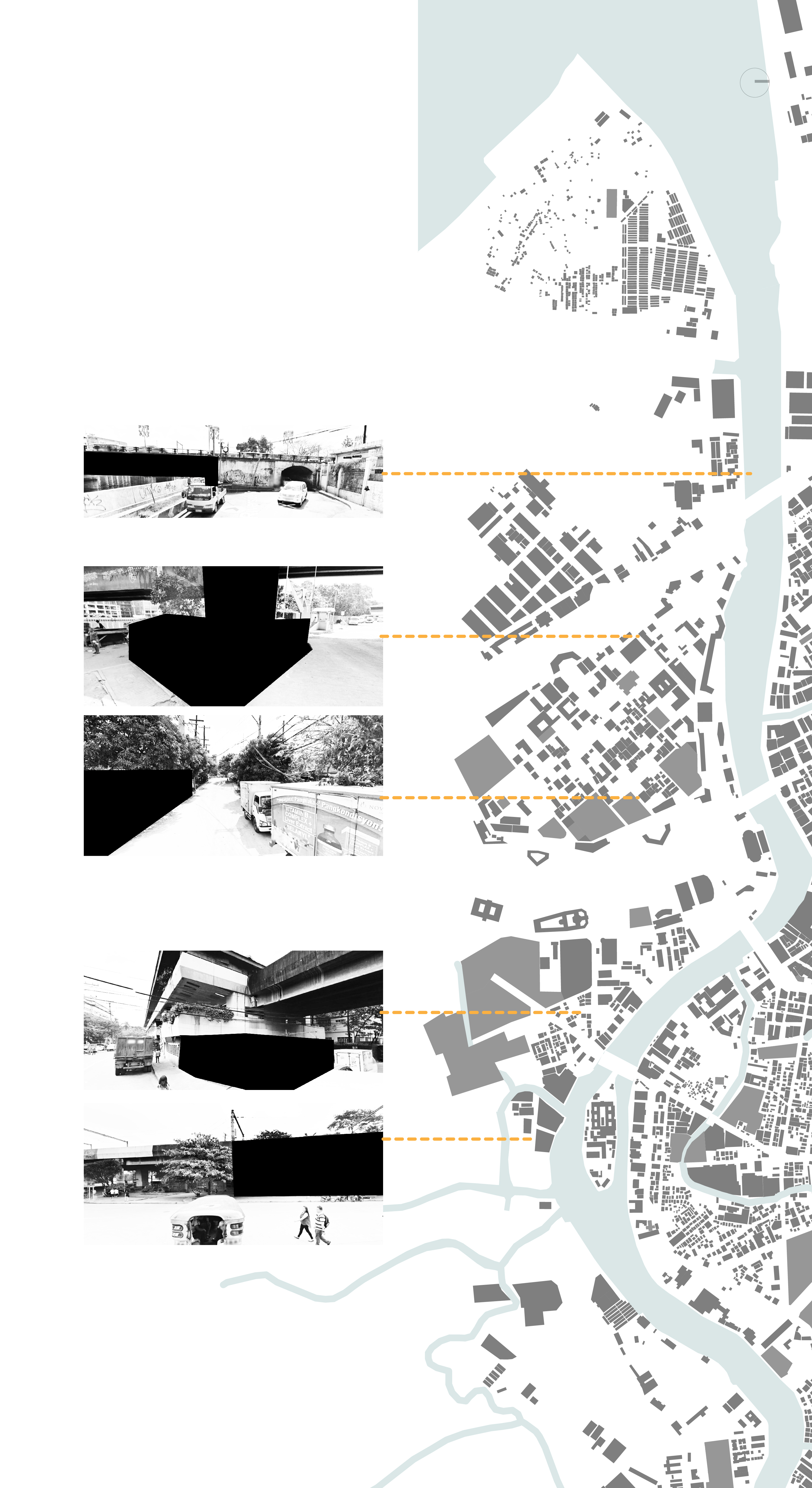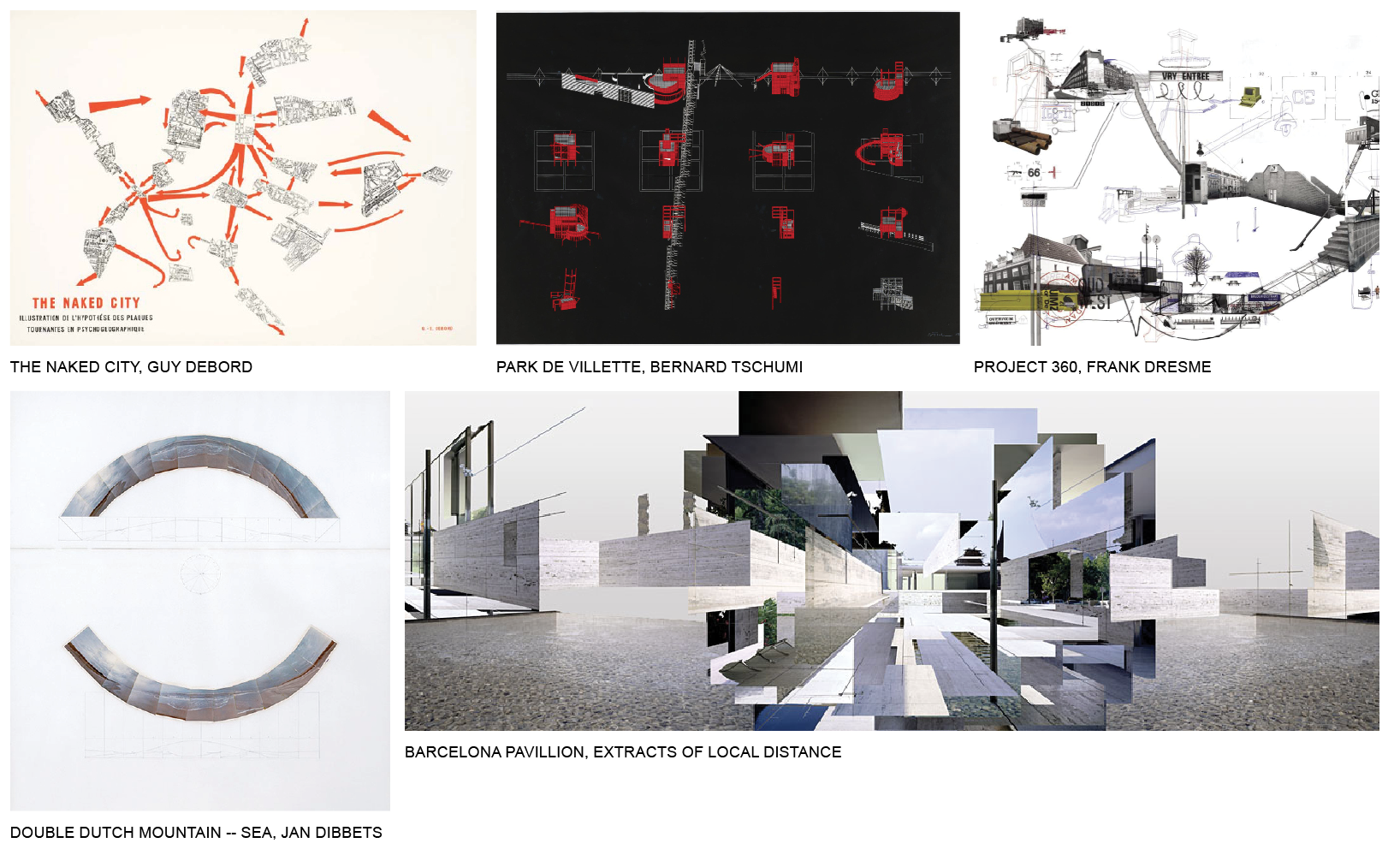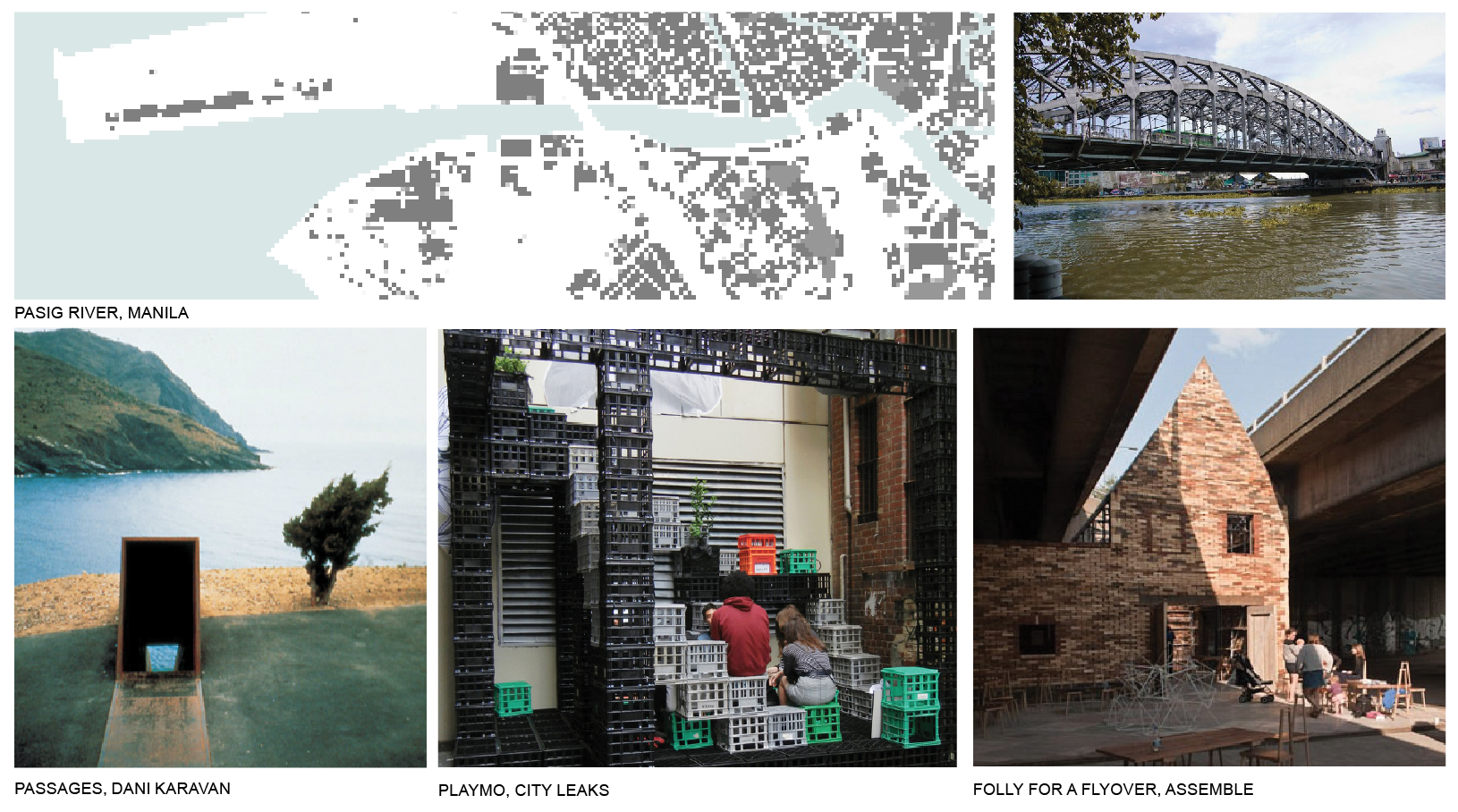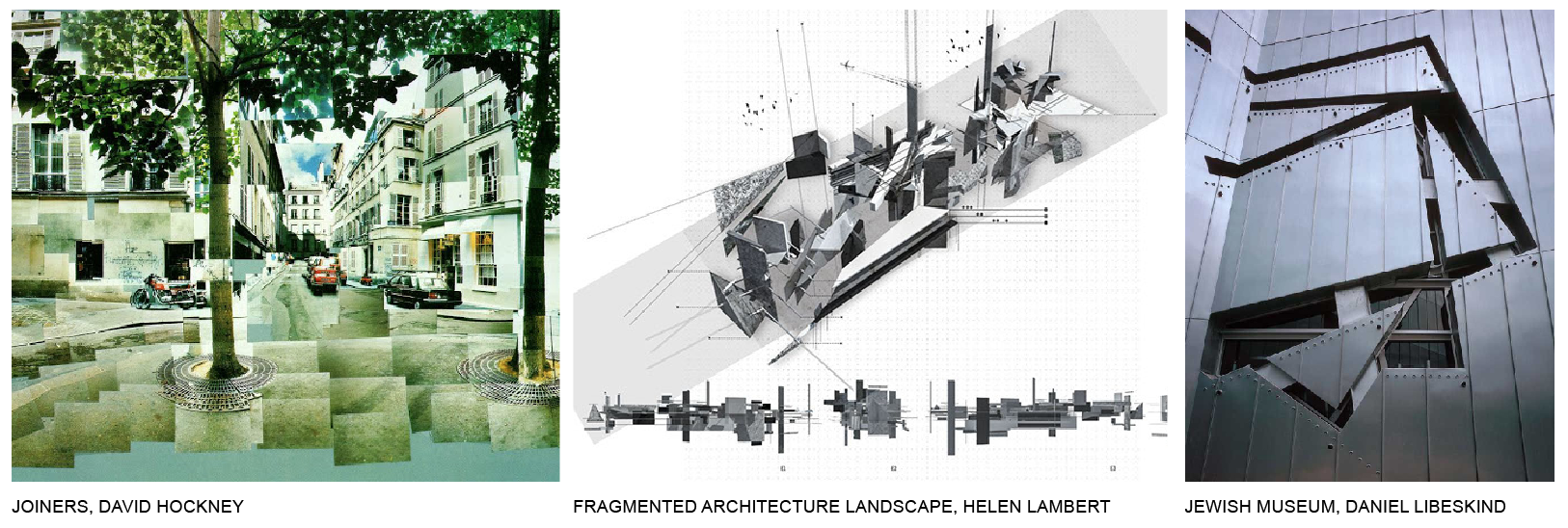Hidden Spaces
|
Why? Discourse on these ‘other’ spaces covers a wide range of philosophical and political meanings, and usually under the assumption that there is a universal ‘other’. With the introduction of heterotopia, the more mundane areas of everyday life that can, too, be construed as heterotypic are largely ignored. What if there are ‘other’ architecture to explore—ones that are less hermetic and more engaged with individuals’ physical lives? Guy Debord introduced the idea of the ‘derive’ or ‘drifting’—a mindless wandering around the city that could open up existing environment to new considerations that involves playful-constructive behaviour and awareness of psychogeographical effects. Thus quite different from the classic notions of journey or stroll, these mappings offers new considerations in viewing the urban context, and seeing the city in a more fragmented pattern. Artists and architects also look at methods of looking at space through fragmentation of what is unfamiliar. By studying the idea of the horizon and horizontality in landscape and architecture, or how the human eye captures and records its environments, the difference between the human gaze and the gaze of the photographic camera are then rebuilt into a fragmented collage. These images become something else — a new form that is neither representative nor derivative of the original landscape. Digital scans of analogue architectural photography form tiny pieces of a large resulting puzzle. The original pictures are being analysed and categorised according to their vanishing-points and shapes. This analysis extracts slices from the source image that retain the information of their position corresponding to their original vanishing-point and thus form a large pool of pieces, ready to be applied to new perspectives and shapes. These types of fragmentation can also be seen elsewhere, with the current mediation between architecture and digital mapping tools, especially in cases where architects have to rely on these to solely construct their projects(?). This thesis aims to explore the idea of ‘other’ spaces by looking at methods of looking at space through the fragmented information provided by digital mapping tools. The architecture shall mediate the hidden in-between spaces that are not perceivable through digital mapping, but visible in current context. What? How? Design process to construct a architectural language and deconstructing the elements to interject landscape both physical and metaphorical, creating a structure of fragmented architecture. The thesis will use research as a starting point, to investigate and map out these in-between spaces, and their existing conditions. The research stage is necessary to derive the design of these interstitial interventions, and for their designed programs such as circulation and public space. The design stage will be a series of experiments that would test, prove and improve the premises. Phase 01: Background Research (due 18 Jan) Background research will include finding site-specific in-between spaces for possible interstitial interventions in the form of models and drawings. Phase 02: (due by First Review) Researching and picking specific sites of specified area and testing out how these interstitial spaces fit into the context, paying respect to scale, program and existing conditions. Phase 03: (due by Second Review) Experiment and test out how these interstitial spaces connect. Also revising and exploring design, materiality and program with the use of models and drawings. Phase 04: (due by Third Review) Project refinement.
Bibliography: Text 1. Michel Foucault, “Of Other Spaces” in Jay Miskoweic, trans. Diacritics 16. 2. Bergson, Henri. (1988). Matter and Memory. New York: Zone. 3. Macleod, Mary. (1996). Everyday and “Other” Spaces (D. Coleman, E. Danze, & C. Henderson, Eds.). Feminism and Architecture, 182-202. 4. Bachelard, G., & Jolas, M. (n.d.). The poetics of space (1994 ed.). 5. Hall, Edward T. The Hidden Dimension. New York: Anchor, 1990. Print. 6. Wilson, Colin. Architectural Reflections: Studies in the Philosophy and Practice of Architecture. Oxford: Butterworth Architecture, 1992. Print. 7. Teyssot, Georges. A Topology of Everyday Constellations. Cambridge, Massachusetts: MIT, 2013. Print. 8. Mukherji, Subha. Thinking on Thresholds the Poetics of Transitive Spaces. Print. 9. Benjamin, Walter, and Rolf Tiedemann. The Arcades Project. Cambridge, Mass.: Belknap, 1999. Print. 10. Lynch, Kevin. The Image of the City. Cambridge, MA: MIT, 1960. Technical 1. Barcelona Pavillion, Extracts of Local Perspective, 2009. 2. Fragmented Architecture Landscape, Helen Lambert, 2014. 3. Fragmented Realities, 2 Architecture, 2008-2010. 4. Life Tunnel, Atelier Bow-Wow, 2009. Projects 1. Bernard Tschumi, Park de Villette, 1987. 3. Alex Schweder, Re Scored Spaces, 2008-2013. 4. Outside-In, Meir Lobaton Corona & Ulli Heckmann, 2013. Art Installations 1. Dani Karavan, Passages, 1994. |



